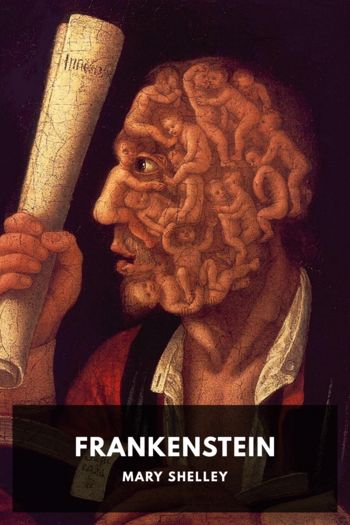Billy Wilder on Assignment Noah Isenberg (little bear else holmelund minarik TXT) 📖

- Author: Noah Isenberg
Book online «Billy Wilder on Assignment Noah Isenberg (little bear else holmelund minarik TXT) 📖». Author Noah Isenberg
B. Z., May 18, 1929
Stroll through the Studios— They’re Shooting Silent Films
Sprengbagger at the Terra-Glashaus
Dr. [Carl Ludwig] Achaz-Duisberg calls his new film Sprengbagger 1010, and he’s shot it himself—his first time doing so. Hans von Wolzogen assisted as production manager, and [Artur] von Schwertführer as cameraman. The destruction of the earth by the expansion of industry forms the basis of the film. The actual plot, which is designed to sell tickets, features popular actors, the lovely Viola Garden and Ilse Stobrava first and foremost, as well as Heinrich George and [Ivan] Koval-Samborsky.
Marlene Dietrich’s Night Flight
At the airfield in Staaken is a plane that is wide, gray, and massive—illuminated in violet by the beacon lights. The wing and fuselage bear the number D 1231. So this is no ordinary airplane—it is the plane that has set a record by remaining in the air for sixty-five hours.
What’s it doing here at the Staaken airfield? It’s part of a film plot—in the Max Glass Film production company’s moving picture that is shooting Schiff der verlorenen Menschen (The Ship of Lost Men, 1929)—and stops here when Marlene Dietrich sets out for the night flight that pulls her out of the ballroom, only to race her off to the isolation of the ocean: the night scene shows the departure, which keeps being rehearsed, again and again, then is finally filmed. Reliable, true, and without a hitch, the aircraft plays along … it likely knows that after setting a record a victor has to be filmed, so it undergoes that process with propriety and grace.
The New Henny Porten Film
A few months ago a strange case of a longing for motherhood drove a woman to steal someone else’s child. Henny Porten read the report in the B. Z. and then could not let go of this subject and built on it. Friedrich Raff and Julius Urgiss wrote the script for the film, which she now shot with Georg Jacoby as the director. Her scenes, which were shown in Staaken, are stirring: simple, sincere, teary—real tears, her mouth trembling as if she’s experiencing this herself, as her hands searchingly grasp the child, a surprisingly gifted child actress, that little Inge. The child’s parents are played by Elisabeth Pinajeff and Ernst Stahl-Nachbaur.
Dieterle Is Once Again Making a Film
Wilhelm Dieterle, who seemed to have disappeared altogether from the stage and screen for quite a long time, can be seen in the studio again working on a new film. Using a screenplay by his wife, Charlotte Hagenbruch, he plays the leading role in Frühlingsrauschen—Tränen, die ich dir geweint (Rustle of Spring—Tears I Shed for You, 1929) with Lien Deyers, Vivian Gibson, and Elsa Wagner; Dieterle directed the film himself.
Experimental Films
Filmstudio 1929 was founded as the first German film studio under the leadership of Moriz Seeler, Robert Siodmak, and Edgar Ulmer. Filmstudio 1929 will make experimental films on a cooperative basis, independently of any industry requirements. The studio is launching its work with the film Summer 29. The cast consists entirely of nonactors.
The New Ufa Program, 1929–30
The new Ufa production comprises twenty lavish productions, most of which are being produced as Ufa sound films. The necessity arises to shoot completely independent silent versions for all the Ufa sound films; that is, hundreds of yards are shot for these films that are not incorporated into the sound film version, but have to be made in order to supply a first-class silent film to theaters that cannot play sound films. On the other hand, the silent films for the theaters that are equipped to show sound films get a sound film entertainment consisting of music, background noises, and sound effects.
The Richest Woman in the World
This French Travel Adventure in Two Parts of the World is a complete failure. You don’t even get to enjoy the enticing Egyptian landscape and the ancient cultural monuments, because the photography is deeply flawed. It would be best to lay a veil of charitable silence over the contents, which are pure unadulterated kitsch. The directors (M. Bandal and Ch. Delac), who poured a great deal of tedious love into it, and Lee Parry—oh, don’t get me started!
B. Z., June 21, 1929
Das verschwundene Testament (The Missing Will, 1929)
AT THE KAMMERSPIELE
When Carlo Aldini, a detective, is on a case, fighting on two fronts, the vagabonds in front of him and the police behind, there is sure to be tension, shockers. Pursuit, attack, escape, chase scene—wild adventures, which he handles with fabulous verve and astonishing acrobatic agility. A real man!
All Rolf Randolf, scriptwriter (with Dr. Emanuel Alfieri) and director, had to do was give Aldini the catchwords and put him into the right position. He did so exceedingly well. It offers peppy entertainment. There is also a healthy dose of humor with the delightful supporting character that Siegfried Arno plays to gripping comic effect. Daisy d’Ora is also quite nice. Hans Junkermann, Jack Mylong-Münz, and J. W. Speerger complete the animated ensemble. There was hearty applause.
B. Z., July 9, 1929
The Winged Horseman (1929)
AT THE UFA PAVILION
These stories from the Wild West, involving villainous caretakers, rapacious neighbors, and brutish highwaymen, are certainly rough-hewn, and the episodes are naïvely devised right down to the end, yet there is something impressive about these prairie films. When they are shot with as much experience and as much zest as Arthur Rosson has done here, their effect is disarming and rousing, particularly with a hotshot like the incomparably quick-witted Hoot Gibson





Comments (0)